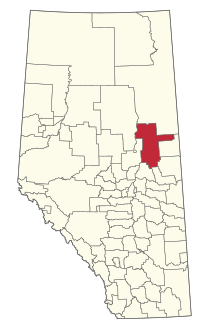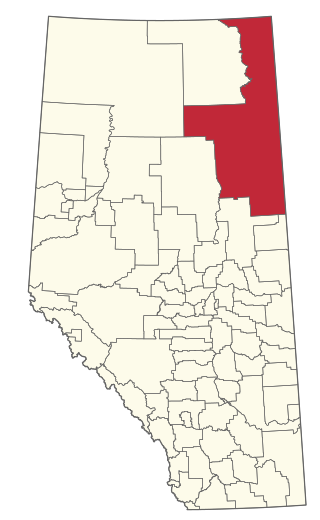
The Regional Municipality of Wood Buffalo is a specialized municipality in northeast Alberta, Canada. It is the largest regional municipality in Canada by area and is home to oil sand deposits known as the Athabasca oil sands.

Bonnyville is a town situated in East Northern Alberta, Canada between Cold Lake and St. Paul. The Municipal District (MD) of Bonnyville No. 87 surrounds the community.

Lac La Biche is a hamlet in Lac La Biche County within northeast Alberta, Canada. It is located approximately 220 km (140 mi) northeast of the provincial capital of Edmonton. Previously incorporated as a town, Lac La Biche amalgamated with Lakeland County to form Lac La Biche County on August 1, 2007.
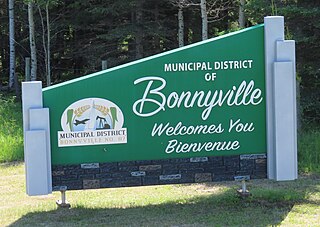
The Municipal District of Bonnyville No. 87 is a municipal district (MD) in northeastern Alberta, Canada in Division No. 12. On the east, it is adjacent to the province of Saskatchewan.
Plamondon is a hamlet in northern Alberta, Canada within Lac La Biche County. It is located on Highway 858, approximately 3.0 km (1.9 mi) north of Highway 55, and has an elevation of 555 m (1,821 ft).
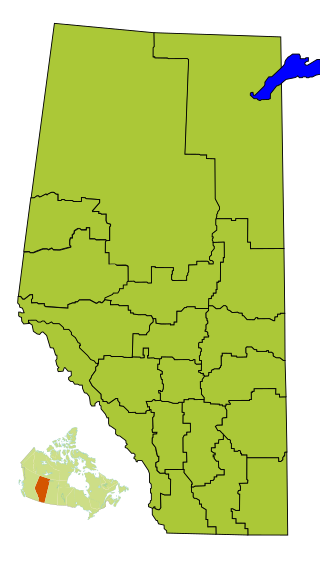
Division No. 12 is a census division in Alberta, Canada. Including the City of Cold Lake, the majority of the division is located in the northeast corner of Northern Alberta. The northern portion of the division is located within northern Alberta.
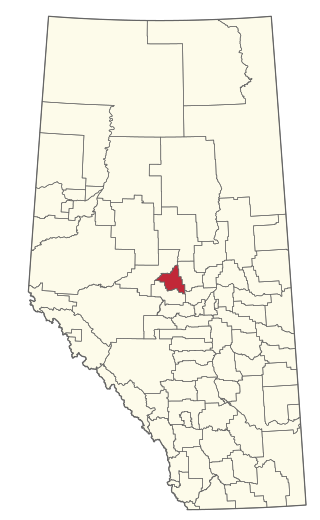
The County of Barrhead No. 11 is a municipal district in north central Alberta, Canada. It is located northwest of Edmonton and is in Census Division No. 13.

Lac Ste. Anne County is a municipal district in central Alberta, Canada.
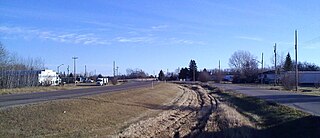
Atmore is a hamlet in Alberta, Canada within Athabasca County. It is located 1 km (0.62 mi) east of the junction of Highway 55 and Highway 63, 43 km (27 mi) west of Lac La Biche, 54 km (34 mi) east of Athabasca and 250 km (160 mi) south of Fort McMurray.

Lakeland County was a municipal district in northern Alberta, Canada. It existed for just over nine years from 1998 to 2007.
Beaver Lake is a hamlet in northern Alberta, Canada within Lac La Biche County. It is located on the shore of Beaver Lake, 4 kilometres (2.5 mi) east of Highway 36, approximately 116 kilometres (72 mi) northwest of Cold Lake.
Hylo is a hamlet in northern Alberta, Canada within Lac La Biche County. It is located approximately 16 kilometres (9.9 mi) south of Highway 55 and 133 kilometres (83 mi) west of Cold Lake.
Venice is a hamlet in northern Alberta, Canada within Lac La Biche County. It is located approximately 11 kilometres (6.8 mi) west of Highway 55 and 130 kilometres (81 mi) northwest of Cold Lake.

Improvement District No. 349 was an improvement district in northeast Alberta, Canada that existed between January 1, 2012 and May 1, 2021. The improvement district was largely coextensive with the Alberta portion of the Cold Lake Air Weapons Range. On May 1, 2021, the improvement district was annexed by the adjacent Municipal District (MD) of Bonnyville No. 87.

Bonnyville-Cold Lake-St. Paul is a current provincial electoral district in Alberta, Canada. The district is one of 87 districts mandated to return a single member (MLA) to the Legislative Assembly of Alberta using the first past the post method of voting. It was contested for the first time in the 2019 Alberta election.

Alberta has provincial legislation allowing its municipalities to conduct municipal censuses between April 1 and June 30 inclusive. Municipalities choose to conduct their own censuses for multiple reasons such as to better inform municipal service planning and provision, to capitalize on per capita based grant funding from higher levels of government, or to simply update their populations since the last federal census.

